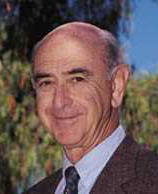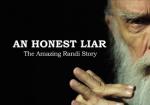(The following is unabashedly stolen from The Center For Inquiry.)
Susan Gerbic
June 27, 2016
The seventh SkeptiCal was held Sunday, May 15, 2016, at the Oakland, CA, Asian Cultural Center. I’ve attended all seven, each is unique and I always leave feeling that I’ve had a great experience. This is billed as the Northern California Science and Skepticism Conference, and as usual for this specific event, is heavy on the science. The speakers are varied enough to keep the audience interested as you will soon see. The hosts are the Bay Area Skeptics led by Eugenie Scott and Sacramento Area Skeptics, Frank Mosher.
I attend as many skeptic conferences as I can, and each one has its own “flavor” and style. SkeptiCal differs from others by being a no-frills event, but without you noticing that those frills are missing. Many of the speakers are working scientists talking about their...
During the holiday season, we usually start receiving messages about good cheer,  Belinda Carlislehope for the future, and volunteering to help those less fortunate. Even for those of us who are non-believers, it's a wonderful time of year.
Belinda Carlislehope for the future, and volunteering to help those less fortunate. Even for those of us who are non-believers, it's a wonderful time of year.
Have you ever wondered what makes people "do good"?
The subject of Prosocial Behavior is something that social psychologists have a studied for many decades. And in the latest episode of the ShelShocked podcast, we talked about the research, told the story of Sempo Sugihara (aka, the Japanese Schindler), and even had an interview with pop star turned philanthropist, Belinda Carlisle, about her charity in Calcutta, India, "The Animal People Alliance."
A New Group: Silicon Valley Skeptics
...and our board president is giving a talk there!!!
Please welcome the Silicon Valley Skeptics to our extended community. They have a Meetup page HERE. If possible, attend the talk on December 4th by Dr. Eugenie Scott, board president of the Bay Area Skeptics.
What if 'Intelligent Design' Had Won? Reflecting on 10 Years Since Kitzmiller v. Dover
Ten years ago, the decision in Kitzmiller v Dover determined that
Intelligent Design was a form of creationism, and thus unconstitutional to advocate in public schools, but what if the decision had gone the other way? What would have been the legal, political, scientific, and educational fallout? Dr. Scott is president of the Bay Area Skeptics, and the former executive director of the National Center for Science Education, Inc., which was part of the plaintiff's legal team.
When: 6:30PM Friday December 4
Where: Emoji Tech Talk Room, Google Mountain View Campus (NOT the Googleplex!), 1255 Pear Avenue, Mountain View (
New BAS Channel Announced Good news for SkeptiCal fans! (Of course you know SkeptiCal – it’s the northern California conference of science and critical thinking, sponsored by the Bay Area Skeptics and the Sacramento Skeptics. You knew that, didn’t you? Good). BAS now has a Youtube channel and the first PLAYLIST presents... the 2015 SkeptiCal speakers. If you remember a particular speaker saying something that you’d like to hear again, or – and I say this with great sorrow – you missed SkeptiCal this year, you can relive the experience by watching the speakers on the new BAS channel. We have talks by: - John Ioannidis on Reproducible Research: True or False? By Carol and Ben Baumgartner A staunch supporter of science-based medicine and a founding member of Bay Area Skeptics, Dr. Sampson, an oncologist, became interested in pseudo-science in 1972 when he became aware of cancer patients turning to Laetrile for treatment. He became an expert on dissecting false medical claims such as homeopathy, acupuncture, chelation therapy, chiropractic, acupuncture, and traditional Chinese medicine. Wally was a prominent and highly respected defender of science in health care education and practice, and is considered a mentor by many well-known skeptics working to combat medical pseudoscience, including Harriet Hall, David Gorsky, and Steve Novella. His article “Why the National Center for Complementary and Alternative Medicine (NCCAM) Should be Defunded”, written in 2003, is as relevant today as then (
Dear Fellow Skeptics: I'm happy to announce that I've started a new podcast on science and skepticism called ShelShocked. Each week, we'll bring you another one-hour program on a topic from science, skepticism, or a related topic. In our first episode, we discuss morality and bigotry, and even have a special interview with my friend Michael Shermer about his new book, "The Moral Arc." Please CLICK HERE, and let us know if there's a topic you'd like us to cover in a future episode. -- Sheldon UPDATE: Due to job and other obligations, Amanda has left the podcst as co-host. She will check in from time to time to let us know what's going on in the skeptic community in Australia. In the meantime, I have found a new co-host in the form of psychologist (and Bay Area Skeptics member) Marilin Colón. Marilin has spoken at our SkepTalk events before, and is a valued member of the adjunct faculty at CSU East Bay, as well as Ohlone College. Hey, all! The JREF announced yesterday the publication of a new critical thinking resource in the form of "Magic in the Classroom - Using Extraordinary Claims to Teach Critical Thinking," a FREE e-book. It can be enjoyed by laypeople, but we're hoping it will also be picked up by educators and utilized in the classroom to encourage critical thinking. This book is the culmination of work by a dozen educators from numerous disciplines; I'm proud to say that three of the chapters are from me! CLICK HERE to visit the download page. It's available in Kindle, iPad, and PDF. Here's a good piece on Bay Area vaccination statistics, from this morning's SF Chronicle. One of the few articles I've seen that explores the nuances of refusal -- it goes beyond "gee, unvaccinating parents are all ignorant/selfish/health nut/California hippies/[insert pejorative of choice here]". I've always thought that for very many non-vaccinators, the main motivator was fear for the health/comfort of the child, and concern about the number and scheduling of vaccinations, rather than "vaccines are poison" mentality. That is a catchier meme for the press, though, and gets more eyeballs. Plus, few articles explore under vaccination, which doesn't necessarily rest with an ideological objection to vaccination and can be just that busy parents don't get around to the full sequence, second innoculation, etc. You must subscribe to the SF Chronicle online to read the full article HERE. One of the most annoying parts of the "world of woo" is people who claim to have psychic powers. Although none has ever actually shown evidence of this ability under strict observation, it's a multi-million dollar business, with some in the field becoming quite prominent. Chip Coffey may not be one of the biggest players, but he's had his 15 minutes of fame with A&E's "Psychic Kids" program and a few other television appearances. Please CLICK HERE to be taken to my latest article on Randi's "Swift" blog. In it, I detail the success of this project, dubbed "Operation Bumblebee." The brainchi
I hope that each person reading this article can, someday, have a weekend like the one I just experienced. It was, as the kids say, epic. Earlier this month, I got a message from my friend, the filmmaker Tyler Meason, letting me know that he’d be in San Francisco on Sunday, June 15th for the screening of “An Honest Liar,” the documentary he co-created with Justin Weinstein that chronicles the life of world-renowned magician and skeptic, James “The Amazing” Randi. I purchased tickets and said that I would see him there. A few weeks passed, and I got another message from Tyler, this time letting me know that James Randi himself would be attending the screening, and suggesting that I look into asking him to make an appearance for the Bay Area Skeptics. Excited about the possibility, I was eventually able to contact Randi’s husband, the artist Deyvi Peña. As it turns out, Randi was delighted by the invitation, and agreed to show up to an informal meet-and-greet the day before the screening. I explained that this wou
SkeptiCal-15 Speakers on Youtube!
 Ann Reid at SkeptiCal-15
Ann Reid at SkeptiCal-15
- Ann Reid: OMG Virus! (Flu, Ebola, Measles and when you really should be afraid)
- Natalie Batalha: Toward Other Earths, Other Life: NASA’s Kepler Mission
- Isil Arican: International
 Wally Sampson It is with deep sadness that we announce the passing of our admired and beloved friend, Wallace Ira Sampson, M.D., “Wally”, on May 25, 2015 at Valley Medical Center in San Jose.
Wally Sampson It is with deep sadness that we announce the passing of our admired and beloved friend, Wallace Ira Sampson, M.D., “Wally”, on May 25, 2015 at Valley Medical Center in San Jose.New ShelShocked Podcast Airs…
 My co-host for this endeavor is the lovely Amanda Devaus, of the Canberra Skeptics in Australia.
My co-host for this endeavor is the lovely Amanda Devaus, of the Canberra Skeptics in Australia.
 JREF eBook
JREF eBook
 Mom & Baby
Mom & Baby
 Operation Bumblebee (San Jose) A group of us wanted to see whether we could trick him into communicating with dead people who don't actually exist. So after a lot of work and planning, we did just that.
Operation Bumblebee (San Jose) A group of us wanted to see whether we could trick him into communicating with dead people who don't actually exist. So after a lot of work and planning, we did just that.
My Magical Weekend With James Randi…
 An Honest Liar
An Honest Liar
